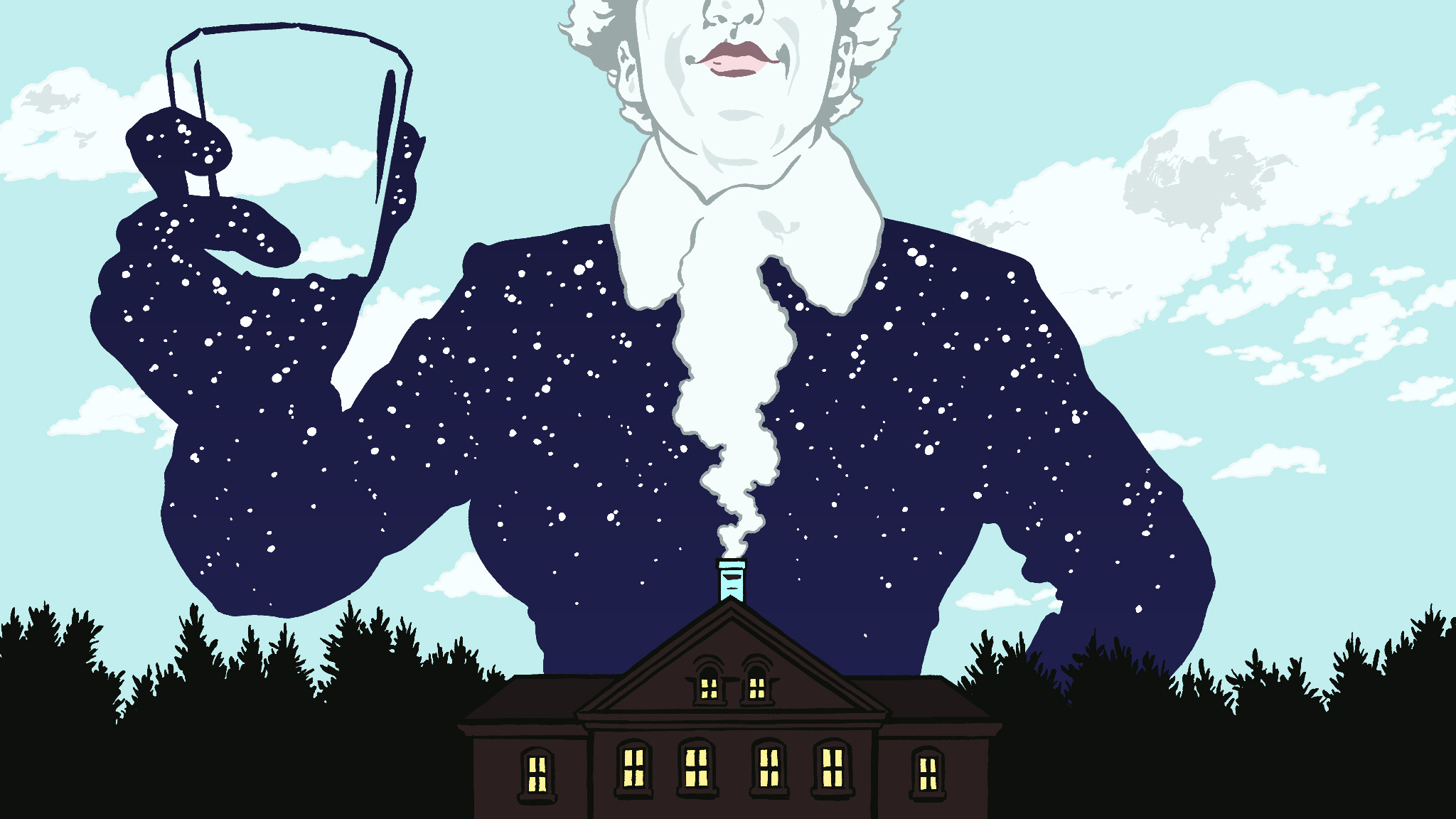Step Inside Madam Jones’ Bawdy Blue House of 19th-Century Pleasure
When Maine became the first state to pass Prohibition in 1851, supporters dreamed of a pine-strewn moral haven. One freethinking former seamstress had other ideas.

Illustration by Casey Roonan
On a spring afternoon in the late 1850s, an upbeat tune from a piano spills out from a curious brick house with a sky-blue chimney. A young lumberjack walking up Harlow Street in Bangor, Maine, stares at the colorful construct. Could this be the salacious destination he’s heard so much about? After spending months cooped up at a remote lumber camp, he’s traveled atop logs floating down the Penobscot River to this booming frontier city. The trip has been thrilling, but this greenhorn is ready for a different kind of fun.
Inside the house, cigar smoke and lady’s perfume drift about, circling pretty women in revealing slips and brawny men who’ve just left a hard day’s work on the river. Some tap their feet to the music and cheer; others stumble upstairs for a different brand of entertainment. Drunk loggers slam frothy steins onto the chiseled log counter, splashing ale into the air. A woman with a wad of cash stuffed high in her stocking flashes a wicked smile …
Keep reading with a 7-day free trial
Subscribe to Narratively to keep reading this post and get 7 days of free access to the full post archives.


